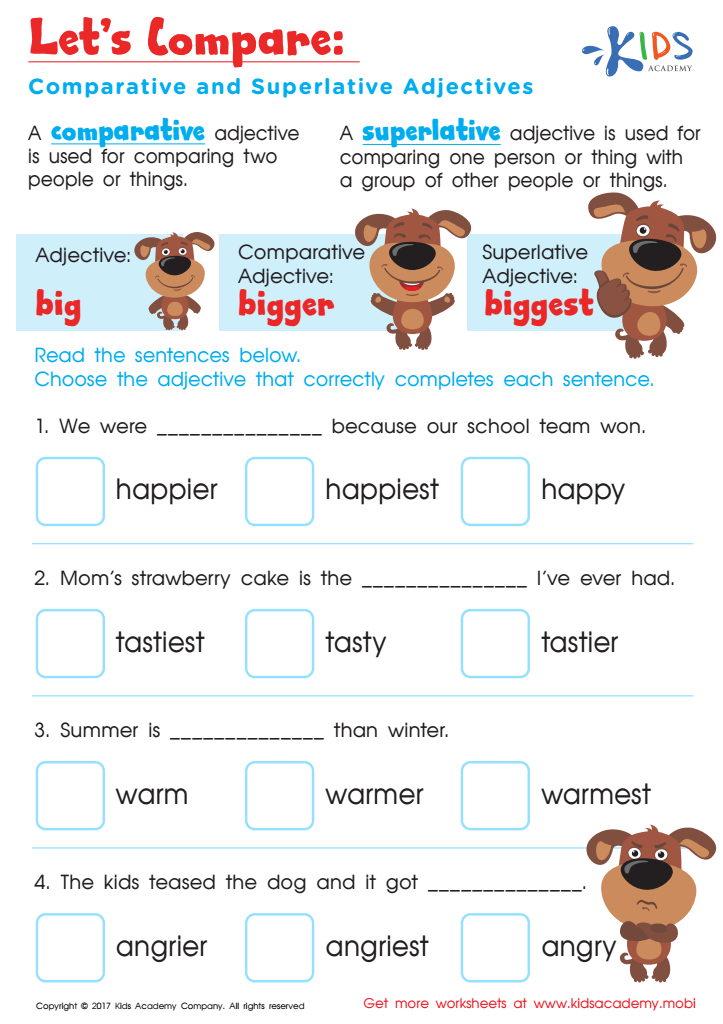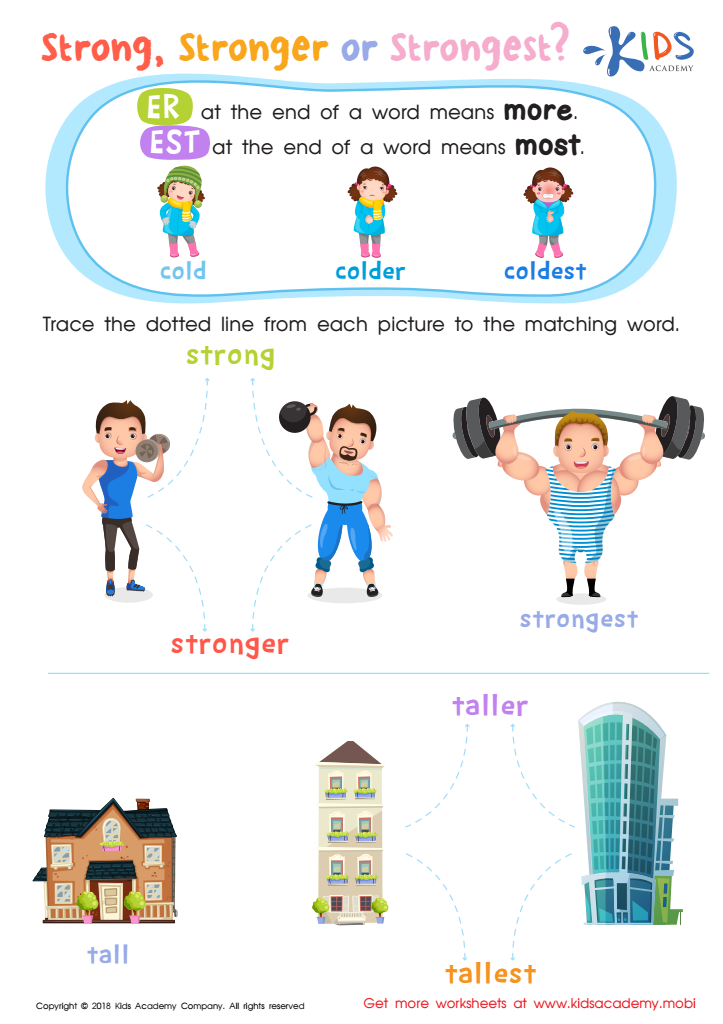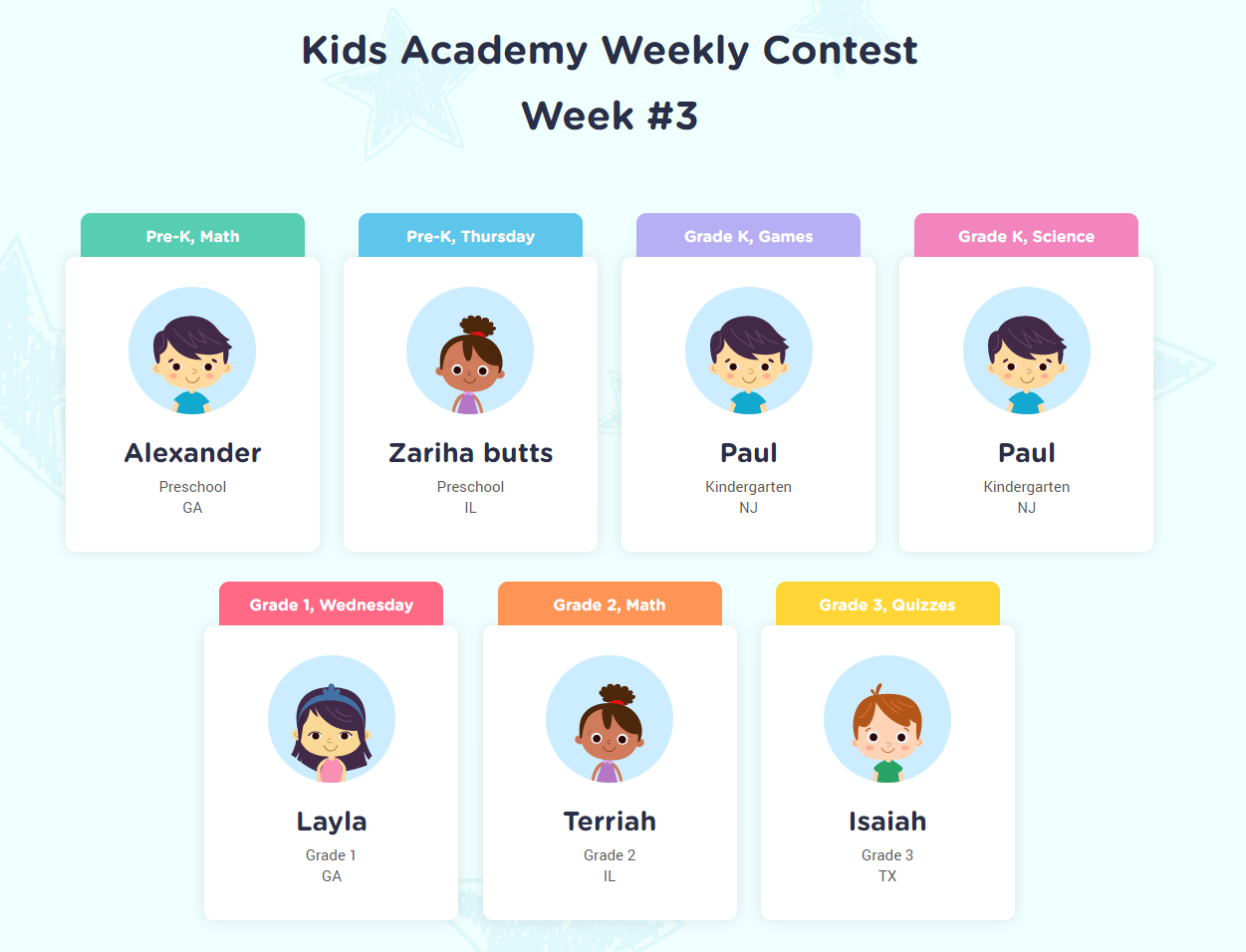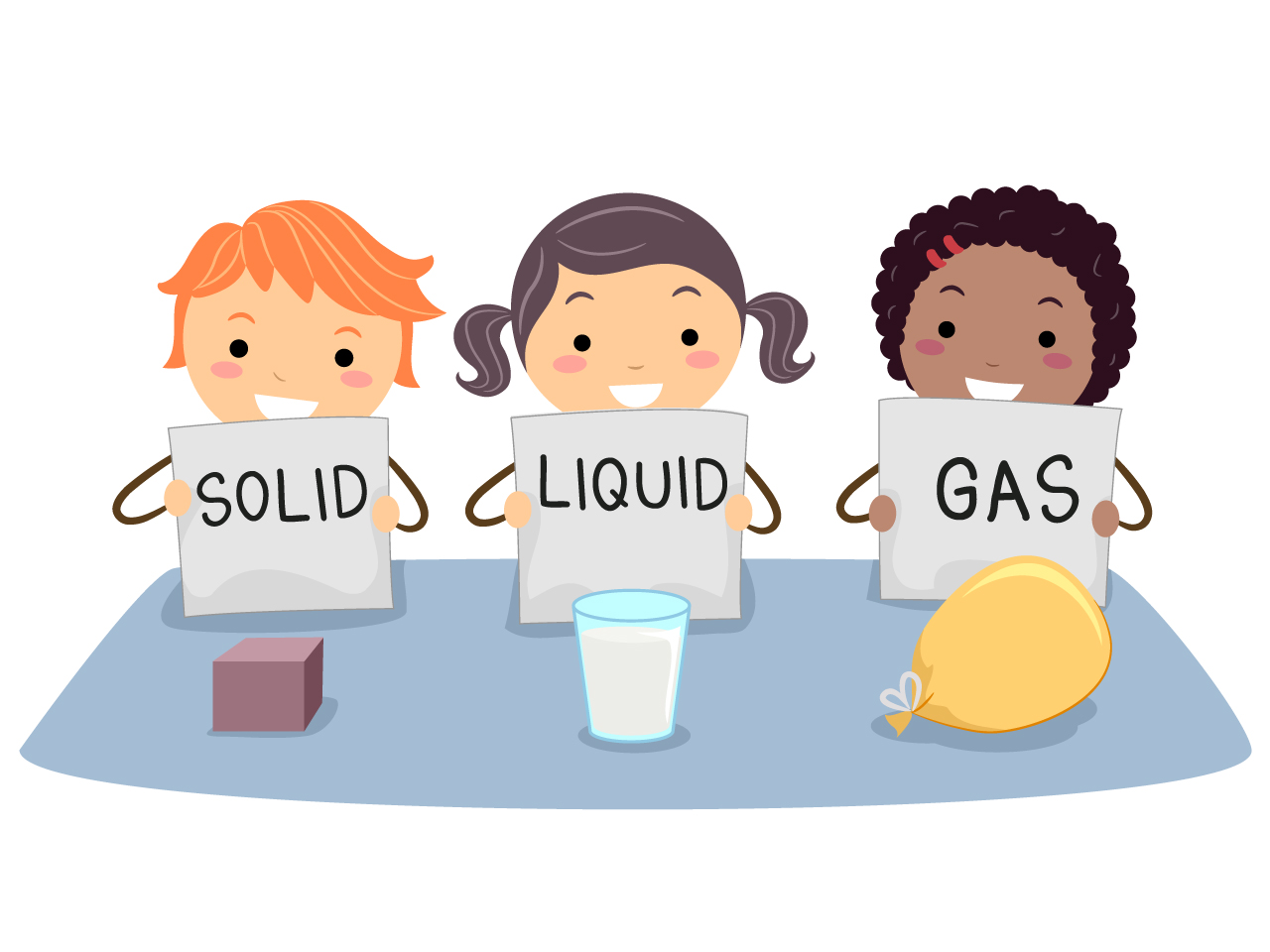Teach and Learn to Compare
July 25, 2022
From youth, kids frequently make correlations, on account of which they can recognize their most loved toys, shoes, or even places. For this, comparatives and exemplifications are typically utilized, which lay out contrast and sort out the things with which kids cooperate consistently. These kinds of words work with correspondence since they lay out contrasts or similitudes between specific gatherings of articles, individuals or creatures, giving more data about them. Be that as it may, similar and standout descriptors in English have various purposes and are framed in various ways.
Comparative Adjectives

Comparative adjectives in English are used to think about attributes or characteristics between articles, individuals or creatures. You can analyze size, variety, level, speed... Illustration of a similar descriptor:
We were HAPPIER because our school team won.
In this example, a descriptive adjective examination is laid out between two individuals. For this situation, ‘happier is the comparative adjective used.
The correspondent worksheet perfectly explains the use of comparative adjectives, using a concept of size – first exemplified in pictures by the adjective ‘big’, and then with familiar adjectives – such as happy, tasty, warm and angry – children could well understand and interact with. This is the reason why this worksheet sustains the basics for comparison, as it stimulates the need of comparison.
The Use Comparative Adjectives: How to Explain Them to Preeschool Children?
Comparative and superlative adjectives in English are used when making comparisons between two things or groups of things (comparatives) or groups of more than three things (superlatives), these comparisons are used to establish differences between characteristics shared by objects. To use both comparatives and superlatives, English sentences must follow specific structures. The structure of sentences with comparatives in English is as follows: noun (as subject) + verb + comparative adjective + than + noun (as object) Brazil is bigger than Spain. (Brazil is bigger than Spain) Cars move faster than bicycles. (Cars are faster than bicycles) The word than is a conjunction that means 'that' in Spanish and serves to unite the two parts of the comparison.
Rules to Form Comparative Adjectives
Now that the basic structures to form sentences with these two types of adjectives are clear, it is important to mention that there are some rules to create these words in English. Comparatives are adjectives. These are divided into two groups: regular and irregular comparatives. According to the group to which they belong, they are formed in different ways.
This worksheet illustrates perfectly and in a very vivid way some examples your children can easily identify. Concepts such as ‘more’ and ‘most’, essential to understand and use comparatives, are assimilated with their correspondent suffixes –er and –est. We also present some other examples with familiar adjectives such as ‘strong’ and ‘tall’ which will be useful to explain and, therefore, understand, the grammar rules with no interference. If you and your child want to practice comparative adjectives, worksheets for kindergarten will help you.
Regular Comparatives
Comparatives words in English are used while making correlations between two things or gatherings of things (comparatives) or gatherings of multiple things (exemplifications), these examinations are utilized to lay out contrasts between qualities shared by objects. To use the two comparatives and exemplifications, English sentences should follow explicit designs.
e.g. Adjective: “old” (viejo) Comparative: “older”
If the adjective ends in the letter -e, then just add -r for the comparative.
e.g. Adjective «large» Comparative: «larger»
There is a special case for those adjectives that have only one syllable. When these are formed by consonant + vowel + consonant, then the last letter must be doubled when forming the comparative and the superlative.
e.g. Adjective: «thin» (thin) Comparative: «thinner»
When the adjective has two syllables In general cases where the adjective has two syllables, the comparative is formed by adding the word "more" before the adjective
e.g. Adjective: «precious» Comparative: «more precious»
When the adjective has two syllables and ends in -er, -le or –ow, there are two possible options. The first is to form the comparatives and superlatives just as in the case of those one-syllable adjectives.
e.g. Adjective "gentle" Comparative "gentler".
The second option is to put "more" in front for comparatives. In the case of "gentle" this adjective would be "more gentle", this is the most common option.
e.g. Adjective: “tender” Comparative: “tenderer” or “more tender”
When the adjective has two syllables and ends in -y In this case, change the -y to an -i and then proceed to add -er for comparatives.
e.g. Adjective: “busy” Comparative: “busier”
When the adjective has three syllables or more In these cases, the only option is to precede the adjective with the word "more" to form comparatives.
e.g. Adjective: “important” (important) Comparative: “more important”
Exceptions
There are certain adjectives that do not behave like the rest when forming comparatives. These are called irregular adjectives in English, and they are exceptions that do not follow the rules of regular adjectives. For these irregular adjectives, comparatives are formed as shown:
Irregular Comparatives and Superlatives in English
This type of adjectives are called that because they are not regular, that is, when forming comparatives and adjectives they completely change their form, basically they are different words. This applies equally to those that have one, two or more syllables. Here are some of the most common irregular comparative adjectives in English:
bad – worse – the worst
far – farther / further – the farthest / furthest
good – better – the best
late – later – the latest / last
little – less – the least
Express Equality in English
An important part of comparisons is expressing the similarity between two objects or groups of objects, for example, a motorcycle that is as fast as another one or a toy that is as entertaining as another toy. For these cases, the following structure is used in English: “as + adjective + as”:
e.g. My house is as big as yours.
Sammy is as tall as James.












